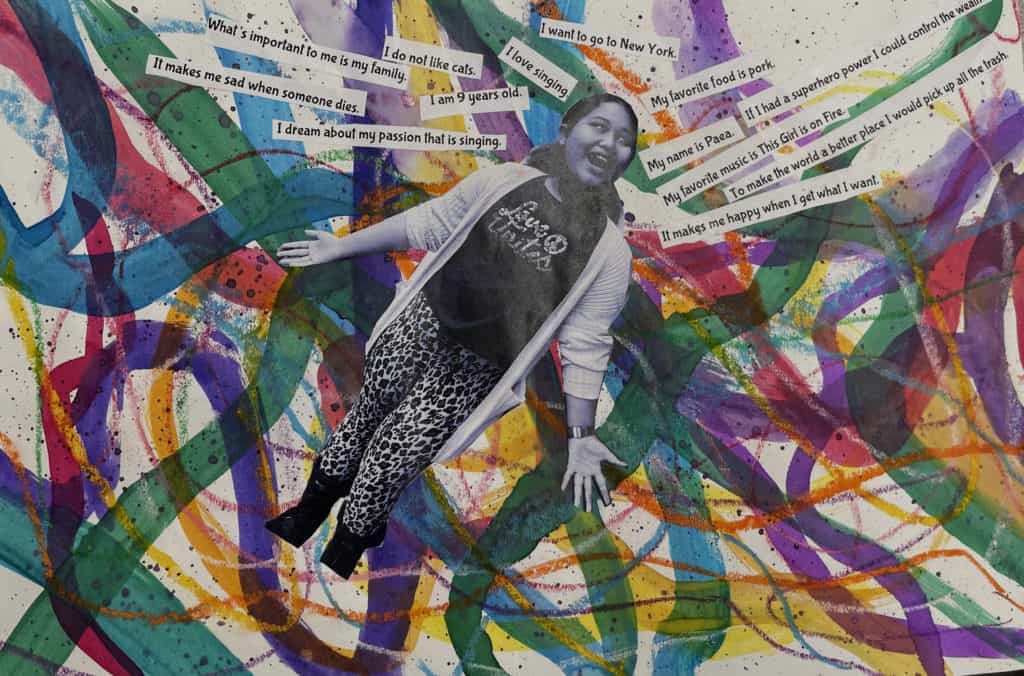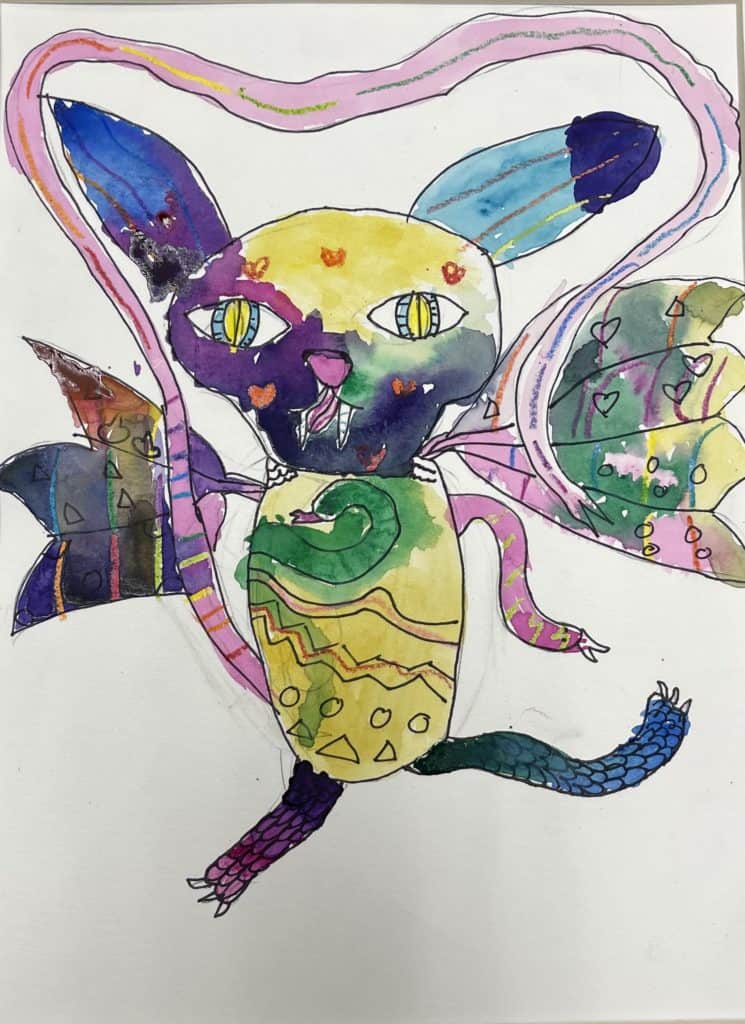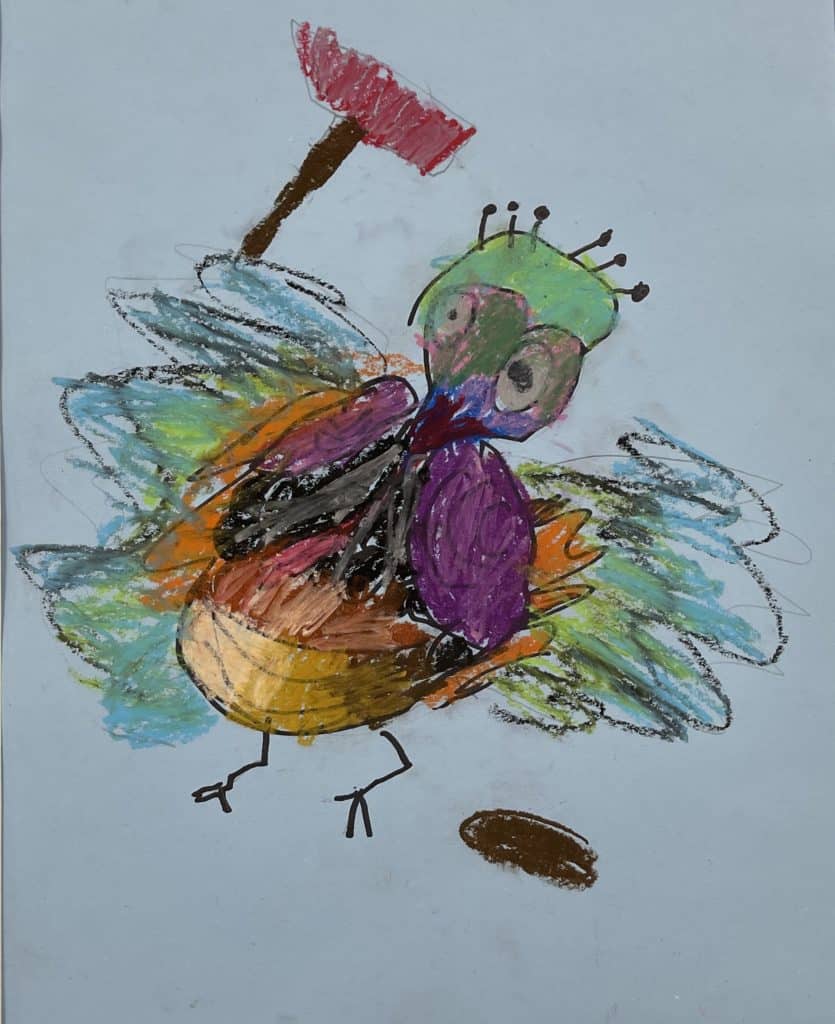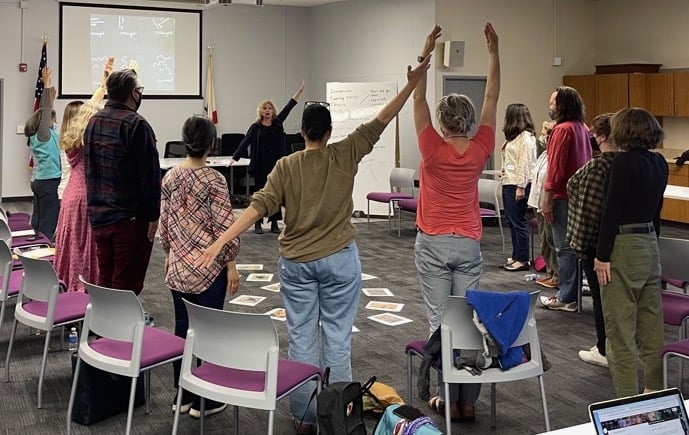The Slice – Spring 2022
PiE-Funded Spectra Art Program Expands in New Directions
PAUSD’s elementary art program, Spectra Art, is unique to our district, funded by PiE, and beloved by K-5 students and teachers alike! I recently sat down with Kelly Martin, PAUSD’s new VAPA Arts Coordinator, and Kate McKenzie, Spectra Lead and Art TOSA (Teacher on Special Assignment), to ask them a few questions about recent developments in Spectra Art.

Can you briefly describe the Spectra Art program?
Spectra Art is PAUSD’s elementary visual art program. In PAUSD’s K-5 classrooms, teaching artists with exceptional visual art skills provide sixteen bi-weekly lessons per year. These lessons are based on Visual Art Learning Targets that are aligned to the National Arts Standards. Students explore a wide variety of subjects, genres, artists, styles, and materials. Many of the lessons are open-ended, which encourages students to tell their personal stories—who they are and where they come from—through art. Student choice and student voice are important! The program encourages visual literacy, connection and creativity, risk taking and exploration, critical thinking, and expression and communication of students’ thoughts and feelings. PiE funds 100% of the teacher artists’ salaries.
What do kids love about Spectra Art?
I have seen children come into the classroom literally dancing, they love their Spectra Art class so much! Students find joy, freedom, and the opportunity for personal expression in their art classes. It’s a place where all kids can find success, and the success, confidence, and risk taking they experience in art can translate into other parts of their lives.



What developments have been taking place in the Spectra Art program recently?
New national art standards were adopted in 2019. We have been developing learning targets that align our content with the new National Art Standards, so that students learn the same art concepts across the district. We’ve been meeting monthly as a Spectra team and so far have developed about 80% of the learning targets, which has been a very inspiring and collaborative process. Our goal is to align our program in concepts and connection to the Spectra Art Learning Targets, while giving teachers the freedom to choose how to present the material in their classrooms.
How is the Spectra Art program incorporating SEL (social emotional learning) and Equity into the curriculum?
Aligning to the PAUSD Promise, Spectra has been working on Mental Health, Wellness and Equity within our curriculum and program this year. SEL (social emotional learning) has been a district emphasis for a number of years, and even more so during the pandemic. Melanie Rick is a Kennedy Center teaching artist who has been focusing on incorporating SEL into the Spectra Art curriculum. The Spectra Art teachers worked with Melanie this year to deepen their understanding of SEL and Visual Art Curriculum. This year art teachers are also developing learning targets for SEL, and including at least one SEL-specific lesson in their 16 weeks of teaching.
Another focus this year has been expanding the Visual Art curriculum. Our Spectra team has been working with Enid Lee, an equity consultant, to look at our art program with an equity lens and expand the curriculum to include a wider variety of cultures, genders, and materials, so that ALL kids see themselves in the art we show them and the art they create.


Can you give some specific examples of Spectra Art learning targets and art the students have created?
Sure, here’s one example: Fifth grade Hoover Elementary artists created their own floral compositions with observational drawing and personal choice, inspired by Van Gough’s paintings of flowers. They compared the color schemes in the different sunflower paintings, texture, and brushstrokes. In this lesson, the fifth grade artists learned about complementary and neutral colors. Complementary colors are opposite each other on the color wheel. Neutral colors are black, white, brown, and gray. The students mixed complementary colors to create neutrals and mixed tints and shades to create value in tempera paint. Value is the light and dark of a color; it is one way artists create the illusion of three dimensions in painting. Then the artists designed a flower composition using observational drawing skills, outlined with oil pastels, and painted it using the colors they mixed. This lesson addresses the 5th grade Spectra Art learning target, “I can draw and paint from observation. I can create 3-dimensional form by using light and dark values and a cast shadow.”


Here’s another example: Second Grade Spanish Immersion artists at Escondido learned about African American artist, Alma Thomas. Students learned about both her personal and artistic life and observed how she incorporated mosaic-like shapes, inspired by her garden and light patterns, into abstract designs. Each student explored his or her own interpretation of Thomas’ work, including creating dense irregular patterns of bright color, use of the radiating design motif, and arranging shapes that allowed the white of the paper to shine through (like light). They used liquid watercolors to emulate the density and brightness of color for which Alma Thomas is known. This lesson addresses the 2nd grade Spectra Art learning target, “I can recognize and describe radiating patterns. I can recognize, describe and create design patterns that include repeating motifs of shapes and lines. I can create a composition that includes awareness of designing the positive and negative space, and I can use patterns with repetition and variation to show motion.”
Tell me about the K-12 Visual Arts Show taking place in late April/early May!
Everyone is invited and encouraged to see Emerging: Creative Minds Persevere! This K-12 visual arts show evidences students’ hearts and minds fully engaged in art making. A wide variety of K-12 visual art subjects, techniques, and media—including drawing, watercolor, oils, clay, sculpture, etc.—will be on display. Come and see our students’ personal stories expressed through their art!
When: Thursday, April 21 4:30-7:00pm (opening night), weekends from 11am-5pm on April 23-24, April 30-May 1, and May 7th
Where: Cubberly Community Center, I Building, 4000 Middlefield Rd, Palo Alto, CA 94303 (see map)
Cost: Free and open to all


Is there any other information you’d like to share with our readers about PAUSD’s VAPA (Visual and Performing Arts) program?
Yes! Our whole K-12 VAPA team—Music, Visual Art and Theatre—is so excited to be back with our students making music, creating art and performing together! Our Orchestra, Band, Choir and Theatre students have put together amazing performances. Everyone is thrilled to be performing in person this year. Here is a link to our performing arts calendar: https://tinyurl.com/PAUSDVAPAcalendar. We hope you can join us at one of our upcoming 5th-12th grade performances in April and May!
——————————————————————————————————–
Creativity Carts Win Hoffman Award
Congratulations! The PAUSD Creativity Cart Program, which was originally partially funded through a PiE Innovation Grant, is a winner of this year’s Hoffman Award from the Santa Clara County School Board Association. The Creativity Cart Program’s mission is to nurture students’ creativity and resiliency while developing 21st century skills, enriching curriculum and instruction. Themes and materials are prepared and developed by staff while working with secondary students who participate in service projects supporting community connections district-wide.The Hoffman Award is awarded to outstanding school programs that have a demonstrated significant impact on student success in Santa Clara County.